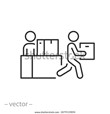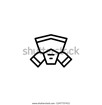Workplace policies and procedures
You should review the following policies and procedures for your workplace:
- WHS
- Work-flow planning
- Environmental planning
- Risk assessment
- Storing tools and equipment
- Manual handling
- Storing and stacking materials
- Preparing and transporting materials.
Tools and equipment
Spades, hammers, bolt cutters, hand saws, pinch bars, tin snips, wheelbarrows, hand trolleys, pallet jacks, pallets and strapping are all common tools and equipment you will be using.
Common carpentry materials
The materials that you may handle include concrete components (cement, aggregate, additives), insulation, joinery units, metal sheeting , paints and sealants, plaster of fibre cement sheeting, reconstituted timber products, reinforcement materials, scaffolding components, structural steel sections and components and timber.
Hazards and risks of manual handling
There are a number of hazards and risks associated with materials handling:
|
Manual handling risks
|
Hazardous substances
|
Hazardous materials
|
Mechanical handling risks |
A hazardous manual task is a task requiring a person to lift, lower, push, pull, carry or otherwise move, hold or restrain any person, animal or thing.
Hazardous substances and materials
Hazardous substances are any chemical or mixture that can pose a significant risk to a person’s health and/or safety if not managed correctly. The Safety Data Sheet (SDS) is a document that describes the chemical and physical properties of a material and provides advice on safe handling and use of the material.
Hazardous materials, like hazardous substances, are any material that can pose a significant risk to a person’s health and/or safety if not managed correctly. One hazardous material that is particularly relevant to building and construction is asbestos. Asbestos fibres are very fine fibres which, when inhaled, can cause very serious, life limiting lung diseases. Asbestos is now banned in Australia and has been since December 2003. Silica dust is generated during the cutting, grinding and polishing of stone and other products that contain silica, such as fibre cement sheeting. Tiny particles can be inhaled and can cause irreversible, life limiting lung damage. Some call silica dust the new asbestos.
Moving materials
You will have already planned to move your materials. When you are ready to go, however, you should look over your planned route and:
- check for new hazards
- ensure that signs and barriers are in place
- check for trip hazards, obstructions, rough or uneven ground
- familiarise yourself with other work that is occurring on site
- become aware of any vehicles moving around on site
- look at how materials could become damaged while you are moving them.
Storing materials
Sort materials so that they are easily identified, stored in a way which means that they are accessible, stored in a logical sequence and easily retrieved.
- You will find more information about managing the risks associated with hazardous substances and materials at https://www.safeworkaustralia.gov.au/chemicals
- Read the information from Safe Work Australia at the following link about Asbestos. If you only follow one of the links in this resource, make it this one. It could save your life. https://www.safeworkaustralia.gov.au/asbestos
- Read the information from Safe Work Australia at the following link about Silica dust. If you only follow one of the links in this resource, make it this one. It could save your life (we know we already said this BTW) https://www.safeworkaustralia.gov.au/silica
- For more information about pallet jacks (including a video) go to: https://phsinverter.com/what-is-a-pallet-jack/#:~:text=Put%20quite%20simply%2C%20a%20pallet%20jack%20is%20a,more%20efficient%20than%20a%20forklift%20for%20smaller%20loads
- WorkSafe Queensland identified a hazard from sheet materials stacked and stored on their edges. Read the information at https://www.worksafe.qld.gov.au/news-and-events/alerts/workplace-health-and-safety-alerts/2011/storage-and-handling-of-sheet-materials





